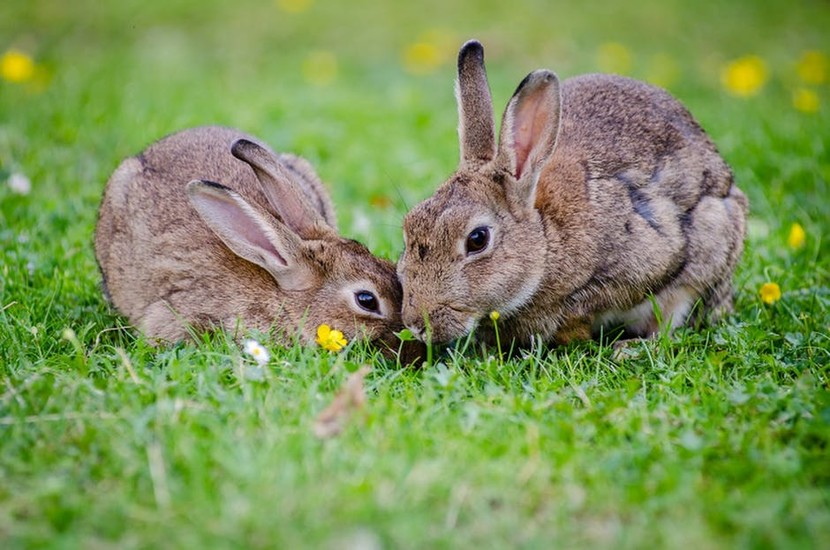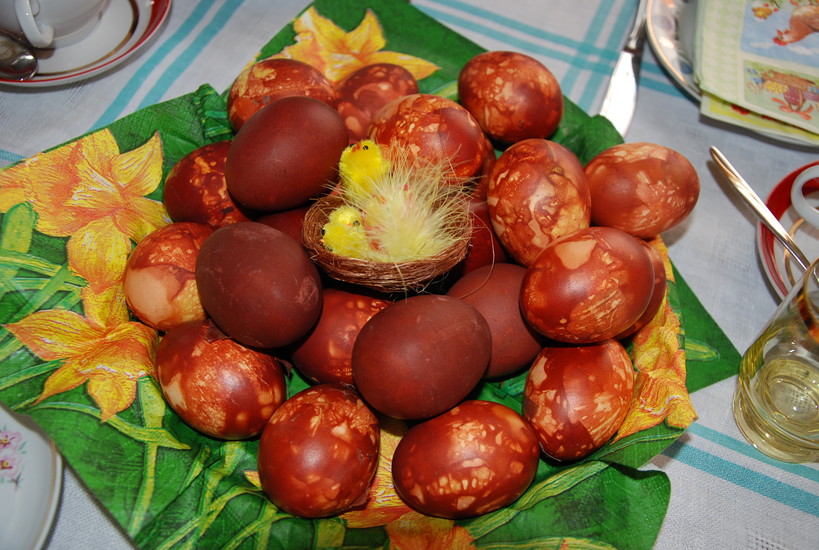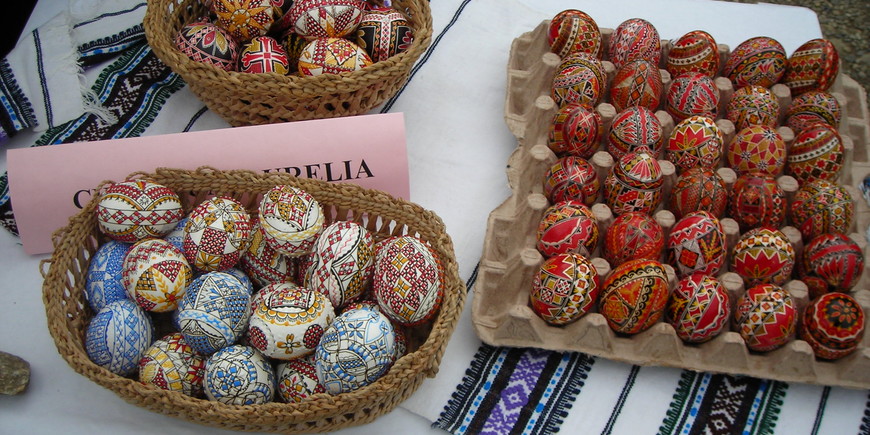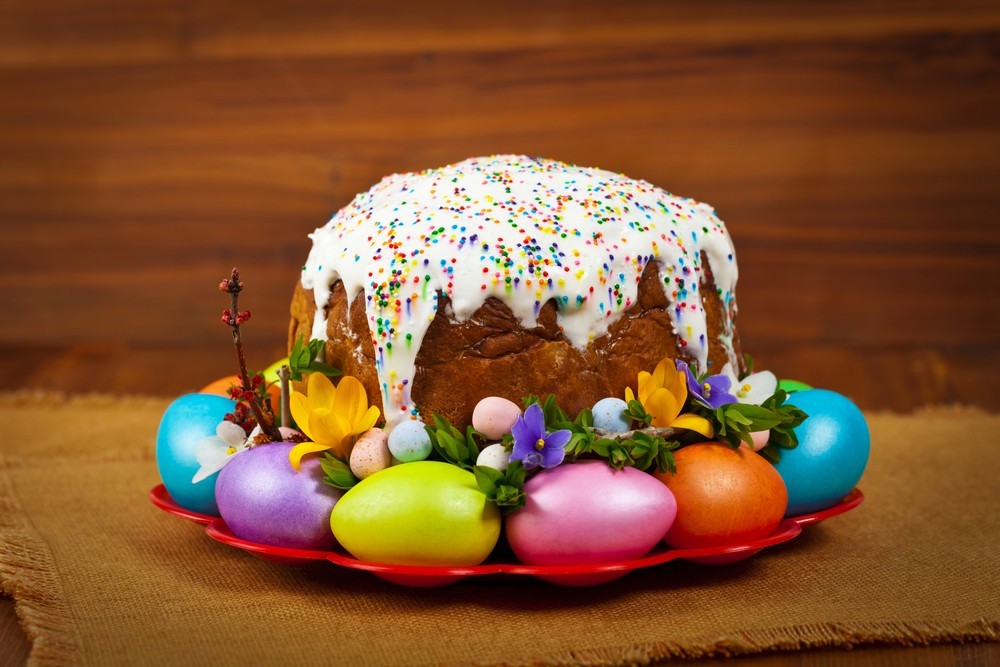The meaning of Easter, and indeed even the date on which it falls each year, differs greatly depending on who you ask. And we’ve asked all of our local offices across Europe (as well as our furthest outpost in South Africa) to give us the low down on how Easter is celebrated in their part of the continent. So without further ado, here are a dozen different descriptions of Easter traditions from Germany, Slovenia, Estonia, Russia, Austria, Ukraine and more!
Easter in Vienna

It might only seem like five minutes since the Christmas tree was being put away, but Easter is already approaching. The religious holiday continues to take on a more secular vibe as the years go by, but this celebration of resurrection remains a popular and relaxed time of year in vibrant Vienna.
First things first, just when is Easter? During a normal year, the festivities would begin with Maundy Thursday, before everything kicks into gear over Good Friday, Easter Saturday and Easter Sunday. The latter is the ‘big day’, and Vienna will be (even more) alive with music on that holiest of days. A number of concerts usually take place across the city, including what will surely be a stirring rendition of Mozart’s ‘Mass in C Major’, performed by the Vienna Boys Choir. The chapel of Hofburg Palace is the venue for that.
So what can a visitor expect in Vienna over Easter? Well, not too many Austrians, for a start. Many locals take advantage of this holiday to head to the mountains and wring the last drops out of the ski season, giving the capital city a decidedly breezy vibe. The abundance of Easter markets accentuates that, offering visitors a chance to pick up some decidedly unique souvenirs. The best of the bunch can be found at Schloss Schönbrunn, which won’t surprise any Vienna veterans…. Read more about Viennese Easter traditions here.
Easter in Vilnius
By and large a conservatively Catholic country, most churches throughout Lithuania will be hosting sombre services again this year. But even for the non-religious, Vilnius is an exquisite city of spires and this time of year makes Old Town even more magical. Amongst families, the focus of the fun is on painting eggs, rolling eggs and bashing each other’s eggs to see which cracks the first. Read more from Vilnius In Your Pocket here.
Easter in Berlin

A celebration of food, fertility, chocolate and Christ, Easter is yet another invigorating affair in the German capital. There are markets, traditions, competitions and concerts, adding an extra element of history and excitement to yet another splendid weekend in Berlin. So, what is on the menu in 2020? Let’s take a look.
Easter is the most fluid of all annual Christian celebrations, so it is important to identify exactly when the party kicks off. In 2021, Easter takes places between 1-5 April, kicking off with Gründonnerstag (Maundy Thursday) and culminating with the nap and hangover-filled Ostermontag (Easter Monday). This is no ordinary long weekend, as the shops do a fine impression of a Sunday on every day with the exception of Saturday. What that means is you need to get your basics in ahead of time, in order to avoid what will be an inevitable mass of humanity in the stores on Saturday.
With the basics out of the way, what can we look forward to over 2021’s Easter weekend? Bonfires, festivals, concerts, feasts, markets, that’s what – or at least it would be during a normal year. Traditional markets aren’t just confined to the Christmas season, and a number of the special souvenir stalls spring up across Easter, most notably at Alexanderplatz and Kurfürstendamm…. Read more about Easter in Berlin here.
Easter in Ljubljana

Although your average Slovene is not exactly a devout adherent to Catholicism (or any other religion for that matter), Easter, or Velika Noč in Slovene, is still a major holiday in the country, and Easter Monday (falling on 4 April this year) is a work-free day. So if you’re visiting Ljubljana at this time, you can expect it to be noticeably quieter than usual, although depending on the weather you may still have to elbow your way into a seat at one of the countless cafés along the Ljubljanica river.
If you have the honour of being invited to someone’s home during Easter weekend – which is not incredibly likely given that it’s traditionally a time for family gatherings – be prepared to eat more or less continually for three days straight, as the weekend is informally referred to by many as ‘the Slovene eating holiday’. One Easter delicacy you have to try is potica, a rolled cake that can come with any number of fillings, most commonly a walnut or poppy seed paste. If you can’t get it homemade, it’s best purchased from smaller bakeries or the central market. Read more from Ljubljana In Your Pocket here.
Latvian Easter

Before crusading German knights invaded what is now Latvia in the 13th century bringing Christianity, ancient Latvian tribes celebrated the victory of light over day, or the vernal equinox at the end of March. Known as Lieldienas, which literally means ‘big days’, it was marked with a variety of rituals and traditions, some of which are still practiced today. Eggs were a staple of the festivities and they were also used as convenient and obvious symbols of fertility and rebirth.
In modern times, Latvians celebrate Easter much as other Europeans do. Although not the most religious of peoples, Latvians usually attend a church service and spend the rest of the four-day weekend eating eggs and visiting friends and relatives. Families often colour eggs, or olas, using natural materials as their ancestors did. Sadly, globalisation means that plenty of modern dyes are also available at supermarkets. For a traditional Latvian coloured egg, you’ll need discarded onionskins, decorations (small flowers, seeds, pine needles, etc.), some gauze and a length of string…. Read more about the dos and don’ts of celebrating Easter in Latvia here.
Romanian Easter Traditions

Easter in Romania is a big deal. Seriously big. Make sure you are well prepared to run the gamut of traditions old and new, endless plates of food and religious significance with our essential look at Easter in Romania. Orthodox Easter Sunday this year falls on 2 May in 2021: a week after the western Christian world. Why? Because when calculating the date of Easter, the starting date used by Orthodox priests is taken from the Julian, and not the Gregorian calendar. In Romania only Easter is affected: in Russia, Serbia, Belarus and Ukraine (and other major Orthodox countries) Christmas is also calculated using the Julian calendar. In Romania – for reasons we have never quite understood – Christmas is calculated with one calendar, Easter another.
According to tradition, there shall be no partying, no weddings and not a great deal of anything in fact during lent, unflinchingly observed by many in Romania (where it is known as post). Note that Good Friday (Vinerea Mare) is not a public holiday in Romania. Only when priests emerge from their churches with a lit candle (at around ten past midnight) to declare that ‘Hristos a înviat’ (Christ has risen) can the faithful who have abstained from meat, dairy products or booze for the past 40-odd days once again indulge themselves. And they do so with the biggest meal of the year. That meal will invariably be centred on lamb (miel). Indeed, Easter is the one time of the year Romanians eat lamb, and it can easily be found in shops…. Read more details about the traditional Romanian Easter feast here.
Easter and Passover in St Petersburg

Due to the fact that the Russian Orthodox Church follows a different calendar to its Western counterparts Easter Sunday often falls on a different date. In 2021 Western churches will celebrate Easter on 4 April, while in Russia it falls on 2 May. When the Catholic and Orthodox churches separated in the 11th century, both churches calculated the date of Easter in the same way. However, the Catholic Church adopted the Gregorian calendar in 1582, and the Orthodox Church continued to use the older Julian calendar. Even when the Julian calendar stopped being the civil calendar of Orthodox countries such as Russia, the church continued to use it.
Despite the difference in dates, there are many similarities between Eastern Orthodox and Catholic Easter customs. For instance, many Eastern European countries, both Catholic and Orthodox, decorate eggs for Easter. However, there are also a number of differences. Easter is called Paskha in Russian. On Easter Sunday you greet someone with Khristos voskres and get a reply of Voistinu voskres, which literally means that Christ has risen. After that it is a custom to hug and kiss three times, symbolising belief, hope and love. Instead of Palm Sunday, Russians have Willow Sunday and people collect willow branches, get them blessed in the church and keep them at home.
Easter is one of the most important holidays in the Russian religious calendar and many churches, which would not normally have regular services, such as St. Basil’s, also mark the occasion. Most religious Russians mark Easter by going to midnight mass and enjoying an Easter feast. Kulich (a puffy raisin cake) and decorated boiled eggs are usually an important part of the festive meal. Note that there are no public holidays at Easter and the city will be working as normal on Easter Monday…. Read more about how Russians celebrate Easter here.
Easter in Croatia
The Croatian word for Easter, Uskrs, means “resurrection”, and here, as in most Catholic countries, it’s a holiday whose importance closely rivals Christmas. Holy Week starts one week before Easter Sunday with Cvjetna Nedjelja (Flower Sunday), when people take decorative twigs to church to be blessed, to protect their homes for the coming year.
The following week consists of cleaning and decorating the home to symbolise the rebirth of spring, and preparing traditional cakes and breads. On Holy Thursday, church bells are tied up for three days in respect of the Last Supper. At this time, one may not plough, sow or chop wood. Both the earth and our bodies must be allowed to rest and regenerate. Good Friday is not treated as a public holiday here.
On Easter Saturday, you are most likely to find people colouring and decorating eggs in traditional style. There are many other traditions for this day, one example being burning wood in front of the church and carrying home the ash.
On Easter Sunday, those of a churchgoing persuasion will take traditional Easter food to be blessed, usually bread, ham, decorated eggs, spring onions, horseradish, salt and cake. Usually these are carried in a wicker basket covered with an embroidered cloth. Then it’s time to spend the rest of the day at home eating: this is considered a family celebration….. Read more about Easter traditions in Croatia here.
Easter in Poland

As a deeply Catholic country, Poland takes its Easter (Wielkanoc) celebrations very seriously. As such, you can expect bars and restaurants to be largely empty of locals or completely closed from Good Friday (Wielki Piątek) to Easter Sunday, or from 2-4 April in 2021. Shops are also typically closed on Easter Sunday and Monday.
Leading up to the season you will see decorative handmade ‘palms’ for sale all over Poland. Representative of the branches laid on the ground before Jesus during his entrance into Jerusalem, these elaborately woven traditional decorations are made from a variety of dried flowers and plants. On Palm Sunday (Niedziela Palmowa, the official beginning of Poland’s Easter festivities) Catholics take their palms to church on Palm Sunday and have them blessed for the season before they are used to decorate the home.
Abiding Catholics attend Church on Thursday to remember the Last Supper, and again on Good Friday to attend stations of the cross – a series of prayers following Jesus Christ’s route to his crucifixion. On Easter Saturday, Polish families bring baskets of food to church to have these blessed as well. These baskets traditionally contain a piece of sausage, bread, egg, some salt, some horseradish and a symbolic ram made from dough. In addition ‘pisanki’ are included – painted boiled eggs which are prepared in the lead-up to Easter by the whole family…. Read more about Poland’s many Easter traditions here.
Easter in Estonia

Estonians aren’t the most religious people, so it’s no wonder that there are many different names for Easter in Estonian: Lihavõtted (meat-taking holiday, marking the end of Lent), Munadepüha (egg holiday), Kiigepühad (swing holiday, referring to the tradition of swinging on the large wooden village swing), and Ületõusmispüha (Resurrection).
In the Estonian Folk Calendar, Spring Holiday is the week leading up to Easter and can fall anywhere between 16 March and 21 April. This was the time for spring cleaning and predicting upcoming summer weather. If it rained during this week, then the summer would also be wet, but if there was fog, then you could look forward to a hot summer.
Good Friday was, and still is a day of rest. It was so important to not do anything that it was common not to leave your house at all. Easter Sunday, on the other hand was a day of celebration. Girls and boys would meet in the village and coloured eggs were given as gifts. Typical foods on the table were veal, pork, and fish. Eggs were served mixed with butter and used as a spread. And for dessert, no Easter meal is complete without pasha, made from fresh cheese curd and flavoured with citrus peel and dried fruit and nuts…. Read lots more about Easter traditions in Estonia here.
Easter in Ukraine

Orthodox Easter falls on 2 May in 2021, coming on the heels of seven trying weeks of Lent. According to Orthodox tradition, believers should abstain from all animal products (meat, eggs, milk, butter, cheese, etc.) and alcohol! It comes as a surprise to many outsiders how strictly Lent is observed in Ukraine. Many of your drinking buddies will drop off the radar and many restaurants adapt their menus in order to remain attractive to the faithful. It’s no surprise that Easter Sunday (the official end of Lent) is one of the most anticipated days of the year.
Lent ends with Passion Week, which kicks-off with Willow (not Palm) Sunday? Palm trees, not surprisingly, don’t grow in Ukraine, so locals have to make do with willow branches to mark the day Jesus entered Jerusalem. On Palm Sunday, you’re sure to notice worshipers clenching blooming willow branches on their way to and from church. Another popular tradition takes place on Clean Thursday. Everything in your house, including yourself, must be scrubbed clean in preparation for Easter Sunday. Easter Saturday is set aside for painting eggs and baking paska. This round Easter cake is richly decorated. Some paskas have the letters XB woven into the decoration. This is the abbreviation for the sacred Ukrainian Orthodox phrase Khrystos Voskres (Christ is risen). The pressure’s on in the kitchen as all food must be prepared before Easter Sunday.
Easter service begins late Saturday night and continues through Sunday morning. The city administration usually ensures that public transport runs throughout the night. Thousands of believers joyfully converge on churches throughout the city carrying Easter baskets full of traditional food. Following a festive mass, priests emerge from the church, weave through long rows of believers and whip holy water about. This blessing officially ends all abstinences associated with Lent and many believers head straight to nearby parks for a good old fashioned vodka party…. Read more about Ukraine’s Easter traditions, both Orthodox and otherwise, here.



This is an interesting article about the Easter traditions in the European countries!!! It is nice to see the Easter celebration picture from Bar, Ukraine!!!